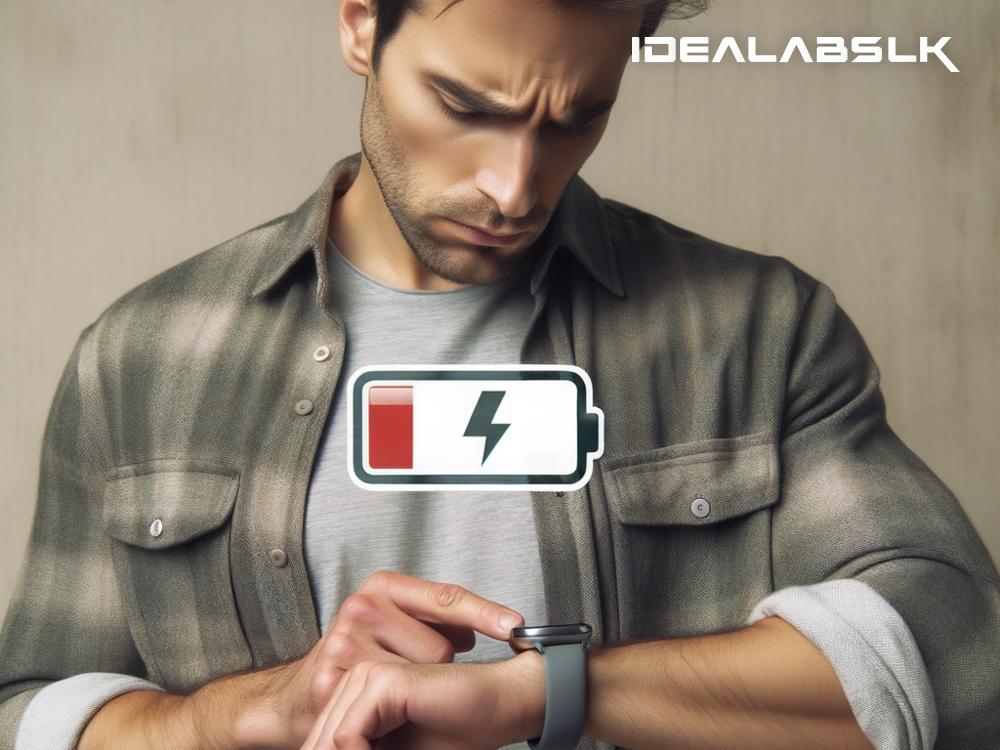Why Your Smartwatch Battery Dies Too Quickly
Smartwatches have become an integral part of our daily lives. They do more than just tell time; they track our fitness, monitor our health, keep us connected with notifications, and even let us make calls or respond to messages. But as useful as they are, one common frustration among smartwatch users is how quickly the battery drains. If you're constantly finding yourself with a dead smartwatch or having to charge it more often than you'd like, you're not alone. Let's dive into the reasons why your smartwatch battery dies too quickly and what you can do about it.
Screen Brightness and Always-On Display
One of the biggest battery drainers on your smartwatch is the display. Many smartwatches come with vivid, bright screens that look amazing but consume a lot of power, especially if you've set the brightness too high. An always-on display feature, which keeps your screen visible at all times, can also significantly drain your battery. While it's convenient to glance at your watch for the time or notifications without having to raise your wrist or tap the screen, it comes at the cost of battery life.
Solution: Lower the brightness of your smartwatch screen to a level that is still comfortable for you to read but doesn’t consume as much power. Also, consider turning off the always-on display feature, if possible. This can drastically improve your battery life.
Too Many Notifications
Smartwatches keep us connected to our world by bringing notifications right to our wrists. However, each vibration and turn of the screen to display new alerts consumes energy. If you have a lot of apps set to send notifications to your watch, this can lead to the battery depleting much faster than expected.
Solution: Limit the notifications that are allowed to come to your smartwatch. Keep it to the essentials, like calls, messages, and calendar reminders. This way, you reduce the frequency of display wake-ups and vibrations, saving significant amounts of battery life.
Excessive Use of Apps and Features
Smartwatches offer a range of features beyond just telling time – fitness tracking, music playback, GPS navigation, and heart rate monitoring, to name a few. Using these features extensively, especially GPS and heart rate monitoring, can quickly eat into your battery life. Remember, these complex tasks require more power to operate, just like running multiple apps on your smartphone drains its battery.
Solution: Be mindful of how you use these features. For instance, turn off GPS when you're not actively using it for navigation or fitness tracking. Similarly, use heart rate monitoring and music playback judiciously.
Outdated Software
Just like with smartphones, running outdated software on your smartwatch can also affect battery life. Software updates often include optimizations and bug fixes that improve battery performance. If your smartwatch’s software is out of date, it may not be running as efficiently as it could be, leading to quicker battery drain.
Solution: Ensure your smartwatch is always updated to the latest software version available. Regular updates can help keep your device running smoothly and efficiently, thereby possibly extending the battery life.
Cold Weather
Batteries, whether in smartwatches or other devices, don’t perform well in cold conditions. Lithium-ion batteries, which are commonly used in these devices, can lose a significant portion of their charge when exposed to cold temperatures. So, if you’re wearing your smartwatch outside in the winter, you might notice the battery life dropping more quickly than usual.
Solution: Keep your smartwatch warm in cold weather by wearing it under your sleeve where it can stay at a more stable temperature. This can help preserve battery life in cold conditions.
Wear and Tear
Battery life naturally decreases over time. As your smartwatch ages, its battery capacity diminishes due to the natural wear and tear from charging and discharging cycles. This is a typical characteristic of lithium-ion batteries and something to expect as your device gets older.
Solution: If your smartwatch is several years old and struggling to hold a charge, it might be time to consider replacing the battery or upgrading to a newer model.
Conclusion
Smartwatches offer convenience and functionality that can enhance our daily routines, but their benefits can be overshadowed by frequent battery drain issues. By understanding what causes your smartwatch battery to die quickly and implementing the solutions suggested, you can ensure your device stays powered longer and remains a helpful companion throughout your day.

